Resources
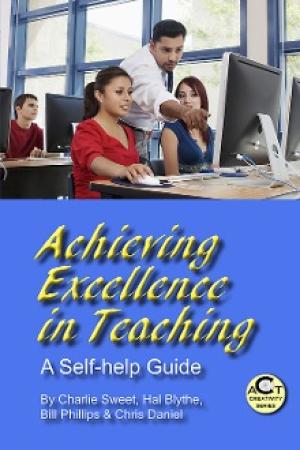
If you are looking for a book on teaching in higher education that does not scare you off with its heft, or frustrate you with its discipline-specific content, or confuse you with so many tips your head spins, then this little book might be just the thing for you! The authors combine their 110 years of faculty development and educational experience to offer their “Ten Top Traits for Terrific Teachers,” targeting the basic dispositions, skills, and strategies that have the greatest impact on deep student learning. Furthermore, they encourage teachers to reflect on their practice with a series of rubrics and action plans: “To improve by increments you must do something” (108). Throughout, they give snapshot summaries of the best research, all in a conversational tone. In an unusual turn, the first half of the book deals, not with mastery of content or course design, but with the internal drivers of the teacher. According to the research, teachers in the classroom have the most impact on students’ success, especially those teachers who exhibit a set of dispositions, or “positive ideologies of self, others, and the very act of teaching” (17-18). More specifically, these teachers demonstrate passion for their subject, professing, and student success; they care deeply, build excellent rapport with students and colleagues, and demand excellence from students and themselves. These dispositions can be learned. The second half of the book addresses the more external markers of excellent teaching. The authors promote solid organization that clearly identifies student learning outcomes and directly links related assessment and learning activities (47). They promote the use of CRISP to create a unity of purpose in individual classes: Contextualize; Review; Iterate; Summarize; and Preview (49-54). They encourage teachers to be “mentors from the middle,” to assume as necessary such roles as facilitator, coach, artist, critical reflector, model, and scholar (61). The authors encourage the use of technology in service of higher-level learning goals, and they recommend the most useful and cost-effective strategies (71-77). They encourage teachers to integrate their teaching, scholarship, and service in order to stimulate student interest and to model scholarly behavior (95). They promote experimentation and welcome creativity into the classroom both by accident and by design. Finally, they invite teachers to consider their teaching environments – everything from the space in which they teach to the psychological space they create for student risk-tolerance (105-109). While not specifically addressing educational strategies in religion and theology, this little volume compacts significant research on teaching and learning into accessible portions – enough to get started but not too much to overwhelm – with support from a concise and pertinent bibliography. And it invites readers to set plans in place for improvement and on-going assessment with its set of rubrics. The book is a useful entry point for both new and seasoned teachers to revitalize and to enhance their teaching practice. It is my choice for use in faculty development initiatives.
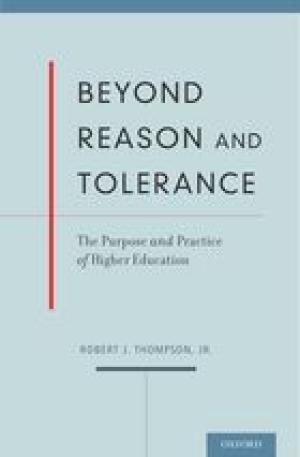
The purpose of higher education is widely debated, both inside and outside of the academy. The major contribution offered to these discussions by Robert Thompson, a professor of psychology with much experience in administration, lies in his summary and synthesis of findings from the fields of psychology and neuroscience as they relate to the cognitive development of students. In Beyond Reason and Tolerance, Thompson focuses on students within the age range of “emerging adulthood” (late teens to mid-twenties), and he summarizes recent scholarship on this group in Chapter 2. He argues that colleges and universities have a civic responsibility to emphasize education that assists student development in three areas: personal epistemology, empathy, and self-authorship. Separate chapters are dedicated to discussing current research in each of these areas, and they form the core of the book. For example, in Chapter 3 Thompson argues that humans’ attitudes toward knowledge change as they age. First, they see knowledge in absolute, black and white terms. Around the time of emerging adulthood, most move to the opposite extreme, and see knowledge as mostly contingent, and based upon one’s perspective. Thompson says that higher education should work to help students reach the third stage, in which they recognize the contingency of knowledge but still understand that there are better and worse arguments, and better and worse forms of evidence one can use to validate one’s ideas. The need to help students develop metacognitive skills about their own knowledge-making is related to one of the main themes of the book, which gives it its title. This is the notion that colleges and universities should be working to help students develop the skills needed to approach difference – ethnic, racial, cultural, and religious – in a more nuanced way than the uncritical position best exemplified by the now-common expression “It’s all good.” Giving students the opportunity to take positions and defend them with sound, rational arguments is essential for them as they develop their epistemology, empathy, and self-identity, all of which correlate strongly to increased levels of post-college success. This book does an excellent job arguing for the continued relevance of higher education in society, and its summary of current work on cognitive development is stimulating. That said, the recommendations it gives on how to help students in their cognitive development are generally aimed at larger questions of university structure. Chapter 6 focuses on campus culture, especially in terms of diversity and the modes of diverse connections that most positively impact students’ development. Chapter 7 focuses on developing new curricula and the new degrees they may support. This chapter also emphasizes the positive benefits of undergraduate research, study abroad, and service learning. Beyond pointing to studies showing the benefits of these kinds of programs, little is said that is applicable at the level of the classroom. This was the greatest missed opportunity in the book. I would have liked to see more concrete suggestions about activities and strategies that could be incorporated into existing courses to encourage cognitive development. Classroom instruction does not appear to have been his primary target, however, and he should be praised for what he does do: give faculty and administrators useful ways to speak about the importance of education in terms of current cognitive science.

Roger S. Nam Last week, Kate Blanchard challenged us to think about our roles as religious educators in light of Chapel Hill. How can I, as a biblical studies professor, teach students to think critically about the events that transpired?...

This book explores the role of authenticity in higher education. Kreber’s work contributes to the Scholarship of Teaching and Learning movement, which includes post-secondary educators from a variety of disciplines who emphasize teaching as a scholarly discipline in its own right (Huber and Morreale, Disciplinary Styles in the Scholarship of Teaching and Learning: Exploring Common Ground [Washington, D.C.: AAHE] 2002). Kreber criticizes the movement, however, for being insufficiently attentive to issues of power and social justice, and she posits her research as a corrective (5). Authenticity, Kreber argues, involves not only reflective awareness of one’s own inner motives and dispositions, but also critical consciousness of the power relations that determine one’s place in the social order (26-27, 38-39). Authenticity inteaching promotes awareness of one’s positionality as a teacher (50-52, 133-140, 171), and it leads one to serve the best interests of one’s students. Authenticity through teaching, meanwhile, defines, and ultimately attains, the students’ ultimate interest: coming into their own authenticity. Higher education thus comes to promote a more just and sustainable world (44-49). Authenticity In and Through Teaching unfolds in eight chapters, plus a conclusion. Chapter 1 engages philosophical and pedagogical literature to interrogate the concept of authenticity. Chapter 2 contains Kreber’s core argument, summarized above. In Chapter 3, Kreber explores the implications for the Scholarship of Teaching and Learning movement, arguing that it is distinguished from pedagogical theory by its reflective stance: it involves the application of research to one’s own teaching practice (75). For these reasons, in Chapter 7 she challenges the notion of the scholarship of teaching as an evidence-based practice. In Chapter 4, she draws on Alasdair MacIntyre’s unique connection between practice and virtue to argue for a moral imperative in teaching practice (MacIntyre, After Virtue: A Study in Moral Theory [Notre Dame, Ind.: University of Notre Dame Press] 2007). Chapters 5 and 6 invoke the critical self-reflection inherent to authenticity as a means to counteract the distorting effects of power in the university classroom. Chapter 8, finally, argues that authentic scholarship of teaching and learning demands public engagement. Operating within the framework of engaged pedagogy, Authenticity In and Through Teaching provides a useful, coherent, and comprehensible framework for conceptualizing the practice of teaching. It also serves as a point of entry to contemporary scholarly literature in several disciplines, including pedagogical theory, moral and existential philosophy, and critical social theory. Finally, the moral imperative that Kreber derives from her understanding of authenticity, rooted as it is in virtue theory, would be particularly applicable in liberal arts and seminary contexts (where the moral shaping of the student is part of the educational process). I recommend this book for scholar-teachers who want to expand their awareness of theoretical literature on pedagogy and bring it to bear on their teaching practice.
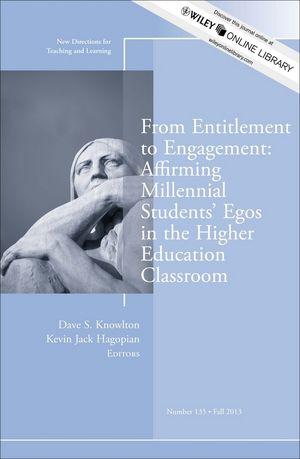
“How bad has it gotten in your class?” the first article’s author asks. “Students eating steaming plate lunches, kissing passionately, conducting loud phone conversations, playing video poker?. . . Asking to be excused from class to barbecue chicken at the go-kart track for a radio station where the student interned last summer?” (7). If these examples sound even remotely familiar, you may find this issue of New Directions for Teaching and Learning helpful. This volume addresses the challenge of teaching millennial students, born between 1982 and 2001, who are often labeled as coming to higher education with an attitude of entitlement that can frustrate professors. The first three chapters explore the theory behind this volume. The first two chapters reframe the concept of entitlement by reflecting on the structure of higher education classrooms (chapter 1) and seeing the psychological vulnerability of students (chapter 2) as an opportunity for ego engagement – a process that the editors describe as “productively affirming student’s egos” to offer “new opportunities for deep learning and ever-strengthening intellectual rigor” (2). The third chapter is an empirical study that explores how students feel they deserve entitled treatment in higher education. The second cluster of articles explore practice and application of reframing entitlement into ego engagement in specific areas. Chapter 4 explores ways to construct a syllabus that invite student engagement proactively, and chapter 5 lays out several practical suggestions professors can utilize to conceptualize their pedagogies. Chapters 6 and 7 provide case studies of actual classroom assignments that engage millennial students’ egos successfully: chapter 6 describes an assignment that immersed millennial students in discipline-based political activities to foster positive ego engagement and chapter 7 describes an assignment that engaged students in narrative pedagogy through digital storytelling. Chapters 8 and 9 explore ways to engage students through already existing classroom practices. For example, chapter 8 provides specific insights about engaging students through technological gadgets and provides practical suggestions for teaching. Chapter 9 explores ways to engage students before and after class periods to affirm their egos. The rest of the three chapters explore ways to engage the moral sense of millennial students by involving them in social justice issues and student-directed goal setting. The author invites faculty to consider their own reactions to student incivility as possibly a response to a professor’s bruised ego ? an over-dependence on official authority based on position rather than on their ability to help students learn effectively. While graduate level professors may experience students’ sense of entitlement less bluntly than is described in some of the articles, I have sensed in my own teaching that the vocation of religious leadership tends to attract people with a sense of self-importance that poses challenges similar to those described in this volume. What the authors conceptualize as ego engagement is a model for empowering students who appear to be aloof to the subject matter but who are seeking meaningful engagement that leads them to deeper growth. From Entitlement to Engagement offers practical advice for fostering creative teaching that meets students’ psychological needs and motivates them to find growth through their own learning tasks.
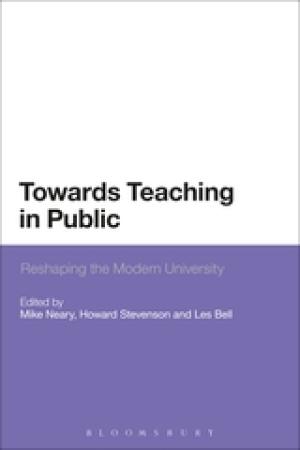
The enterprise known as collegiate education is at a crossroads. This statement should not be a surprise to those involved in higher education. The playing field has changed drastically over the last decade since the advent of online learning. Debates continue to rage in the academic community regarding issues related to accreditation, how courses are delivered, faculty credentials, and the cost of a degree program. These questions confront present-day educators and administrators located in U.S. higher educational institutions. These debates are keenly felt in the U.K. and in other global contexts, although each context will address them from different perspectives depending on teaching and learning needs. Towards Teaching in Public is primarily focused on addressing these questions head on. As the book details, there is a seismic shift occurring in the educational institutions of the U.K., and it is likely that these shifts will be felt here in the U.S. sometime in the not-too-distant future. That said, understanding how these shifts are impacting British schools before they impact American institutions could aid administrators and faculty in how to plan for the forthcoming changes. The place to begin, then, is in understanding what is meant by “public.” In the U.K., “public” and “private” have less to do with religious affiliation and more to do with where tuition dollars come from in higher educational contexts. In the British system, education in “private” institutions is provided at the expense of the student. “Public” institutions, then, primarily receive money from the government to provide education to students. These students can be degree-seekers, lifelong learners, tradesmen who are looking to pick up some new information, or individuals interested in taking a class now and then. The question the book raises is whether this remains an effective endeavor in a perpetually struggling economy. A secondary question concerns higher educational institutions as the loci of learning – teacher, student, and community. In answering these two fundamental questions, the contributors to this volume contend that the university could serve as the central hub of political, societal, and cultural reform. The volume is divided into three major sections. The first section (chapters 1-3) focuses on education as “a public good.” The essays in this section recount the modern history of education in the U.K., noting how the public university was established to provide free education to all and how that morphed into the private universities that sought to offer degrees to paying students who would be held to more rigorous academic standards. The second section (chapters 4-6) focuses on the relationship between teacher and student. This section argues for a higher value to be placed on students. The chapter entitled “The Student as Scholar” was particular insightful as it mapped out a program for developing undergraduate researchers who could benefit the university in a number of ways. The final section (chapters 7-10) seeks to answer the questions raised previously. First, the university should continue to offer free education to the general public through workshops, public lectures, and continuing education offerings. However, the book advocates for requiring stricter regulations for degree-seeking students. Second, the locus of learning has moved to the community, although the concept is more Marxist in nature. This would be my only critique of the material in the volume. In the end, the authors seem to say that the purpose of education is simply to share our collected knowledge. The modern university, then, will be a place where the discussion of ideas will occur but little else. Although this volume was an insightful read, it would most benefit those involved with administration or international policy discussions rather than faculty.
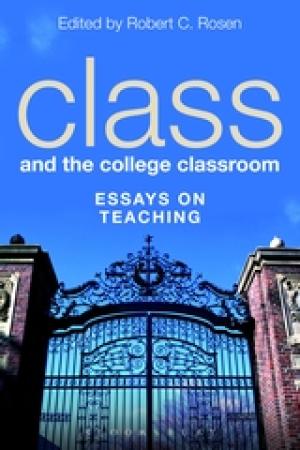
These essays, reprinted from Radical Teacher, analyze class in the classroom. Editor Robert Rosen recognizes that, in teaching about race, class, and gender, class often receives the least nuanced attention. With the 2008 economic downturn, class reemerged strongly: in the extreme inequalities in capitalist society; in the recognition that college is no longer the guaranteed “path to upward mobility” (1); and, in recognizing the functions of class in education’s many facets, from colleges to for-profits. Often, for poor (30-39) and immigrant, particularly undocumented (19-29), students, we are failing. This is true, as Susan Jhirad points out, even in community colleges, which have been the open door to college for many “non-traditional” students (40-48; 67-71). The book also gives voice to the working poor in the academy itself: alienated adjuncts (67-71; 78-86). We perform class as well as live it. Richard Ohmann writes about his students’ arguments against Jane Austen’s sense that one should strive to marry according to or up in class. His students, nevertheless, will enact her class vision. They come from the “professional-managerial class (PMC)” (12), and college, Ohmann suggests, lets them engage diversity, “for a while” (13), as they move back to the PMC. Class, he argues, is complex and powerful: an identity, “a script you act out daily, a bundle of habits and feelings and ways of relating lodged deep in your psyche and broadcast by your talk and conduct…[that] is [neither] easy to revise [nor to] conceal” (13). Erin Smith demonstrates this truth as she tells her current, less privileged, students about a white, male student from an elite university who refused to accept inclusive language, announcing “that when he was out in the real world, he would make all of those women and minorities working for him write the way he told them to” (113, emphases mine). While her less privileged students thought the young man was wrong, his example did not lead them to analyze class as a factor. Smith suggests, “a reliance on experience can effectively locate individuals in history, but it cannot – by itself – enable individuals to see history in themselves” (115-116): how they perform class. This book offers many teaching strategies, framed by the awareness that a classroom encounter with otherness often “‘substitutes’” for the real thing (147), “sanctioning,” as Ohmann writes, “all kinds of nonthreatening nonconformity” (147). The strategies unsettle class assumptions, such as Janet Casey’s teaching literature in terms of how it is marketed and Ohmann’s having his students write about their “imagined” best and worst jobs and whom they imagine works those jobs. This volume is valuable for its unflinching look at the current academy and for its warning that higher education, even as it works to be inclusive, can reproduce “class structures and relations” (146) appropriating “lower” class artifacts and making students confront class only within safe boundaries, changing nothing but the items on our syllabi.
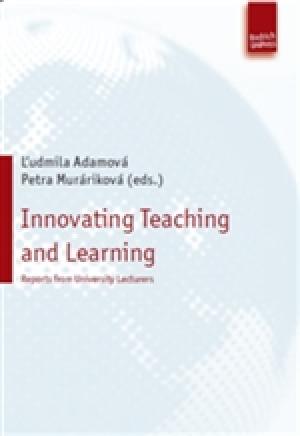
Innovating Teaching and Learning is the final product of a summer program and an extended follow-up Inquiry into Student Learning initiative based in Slovakia in 2011 and 2012. Participants from a wide range of disciplines were required to identify a specific learning challenge within an existing course, design a “pedagogical innovation” (8) that would address this challenge, implement the innovation during the following teaching semester, and document the results of the innovation in a report for the program coaches. The editors identify the core chapters of Innovating Teaching and Learning as the best reports emerging from the innovation projects. “Innovation” in the context of this volume refers to a shift in focus from an instructional paradigm to a learning paradigm. In short, this means placing students at the center of teaching practice: “teachers should focus more on how their students learn rather than placing importance on their own performance as teachers” (8). Following principles of student-centered practice, participants in the program applied pedagogical theory to specific course challenges, challenges organized into five overall sections in the volume: improving student pre-class preparation, teaching large classes, teaching courses rich in complex terminology, enhancing student abilities of theory application, and making assessment an effective tool for student learning. Their reports include a brief introduction to the particular pedagogical challenge in question, an outline of the theoretical background for the innovation, descriptions of research design and findings, discussion of areas of difficulty, and suggestions for future improvement. For example, Katarína Hrnciarová (33–40) introduced blog assignments as a way to motivate students to read assigned literature in her philosophy course, applying theoretical work on student motivation, blended learning, and the use of blogs in higher education. Anna Vallušová (83–91) designed worksheets for students in her microeconomics class in order to encourage students to actively make connections between economic models and real-world practice. Vallušová reports that students who had failed the course in the previous year reacted most notably to the innovation, showing “surprise and enthusiasm when they had realized that certain theories corresponded with phenomena they knew from real life” (88). The main strength of this book is its presentation of “small innovations”: targeted learning strategies designed to meet a particular learning challenge or outcome within a course based on applied pedagogical theory. The theoretical work behind the innovation projects moves the volume beyond a simple “teaching tips and tricks” manual, balancing practice with theory. Each project was fairly small within the scope of a course, the idea being not to overhaul a course but to introduce change gradually in order to effectively ensure that learning activities and assessment align with learning outcomes. As each project was small, teachers were able to easily document and reflect on the impact of their respective changes. Innovating Teaching and Learning is an important resource for stimulating critical reflection on teaching practice. For example, after implementing a project similar to Hrnciarová’s blog assignment, I discovered new strategies for advancing student learning by motivating students to read. This reflection also enabled me to think about collecting documentation on my discussion starters project in order to critically evaluate the results. The editors themselves recognize the major limitations of Innovating Teaching and Learning in their concluding chapter. The most frustrating limitation for participants, receiving comment in a number of reports, was the limited control of the instructors involved (mostly graduate students) over their courses; seminar leaders or those teaching from a pre-set syllabus could change small components of a course, but could not change content or major components of student assessment. Findings sometimes indicated disconnections between the objective of the innovation and the course methods of assessment. The volume is, however, an accessible starting point for those wishing to more thoughtfully integrate classroom activity with pedagogical research.
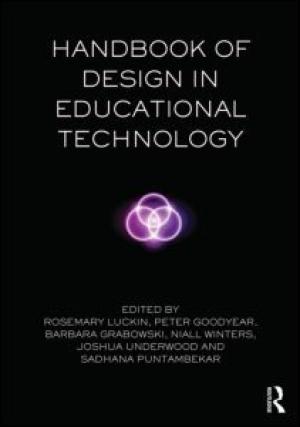
Although this handbook is primarily for design in educational technology much of it can be applied to the educational ecology of religious studies and theological education. It is also useful for discussions of basic learning theory and for applying technology to the task of teaching. Chapter 3, “The Ecology of Resources,” provides a model of the learner’s context and identifies steps to map the learner’s ecology of resources (33-51). Some of these steps may be familiar to seasoned educators. Those unfamiliar with these steps will find help that deepens their understanding and practice of teaching. Perhaps most notable here concerns the identification of filters, both positive and negative, through which the resources of the teaching environment, people and tools involved, and knowledge and skills required interact with the learners. A chapter on assessment of student learning of twenty-first century skills focuses on collaborative problem-solving (53-64). This section provides a table that lists three indicators for success: action, interaction, and task completion, with brief descriptions of each. It then details three levels of quality criteria for each (low, medium, and high) with descriptions about each criteria level. The criteria, in particular, could be helpful for assessing an exploration of religion-based bullying in classroom contexts, for instance. Context, Activities, Roles, Stakeholders, and Skills (CARRS), in a chapter on involving young people in design, provides a useful structure not only for the design of software but also for the development of a single class or an entire course (101-11). Each element involved will be familiar to seasoned teachers, but the scheme’s attention to developing the abilities of young participants to contribute is especially useful for beginning teachers. “Designing for Seamless Learning” (146-157) creatively claims mobile technology ? such as cell phones and tablets – can be helpful for student learning. Seamless learning emphasizes continuity of learning within and beyond the classroom. Table 13.1 lists ten characteristics and shows specific ways by which mobile technology supports seamless learning: it is learner (user) centered, an everyday life experience; it functions across time, across location, and across social groups; it flows naturally across different situations, or can be situated (wherever needed); is cumulative, personalized, and accommodates versatile learning activities. Perhaps students studying worship, for instance, might be encouraged to report or note kinds of worship in their community. Prompts for learning (scaffolds) have been a staple of classroom education for decades, and the chapter on “Scaffolding Learning in a Learning Management System” (241-255) extends that tool beyond the traditional classroom. Using internet tools to provide feedback, clarify assignments, engage in dialogue, and so forth engages the learner outside of the class in a range of ways to prompt learning. Chapter 21 includes a discussion of the use and challenges of Second Life, a virtual reality construct, for educational purposes (366-369). The use of software gaming programs for teaching religion and theology is a growing area of practice. This chapter is timely. Additional thought-provoking approaches to teaching practice are outlined within this book’s forty-three chapters. This book could be purchased by the library, in paperback or ebook format, so that faculty in a department or theological school could have access to it. It is a stimulating tool that encourages a range of technological tool uses in ways appropriate to religious and theological education.
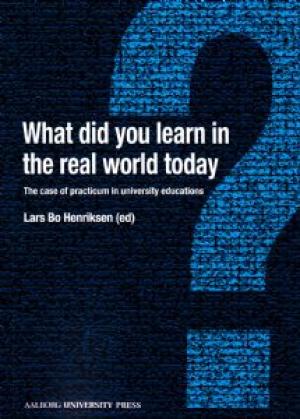
Henriksen’s edited volume, What Did You Learn in the Real World Today, is a collection of sophisticated and philosophically-grounded essays that shift pedagogical foci from how we teach to “what is learned” and “how is it learned” (18). The dense essays are divided into three sections. First is knowledge, learning and practice; next is the role a student’s body plays in learning and constructing new knowledge; finally, there is problem-based learning (PBL) and practicum. The Danish Aalborg University Press funded and published the project and the specific case studies (five of the eleven chapters) do reflect a public Norwegian graduate engineering program. That said, the essays, particularly in the first and second sections, have much wider relevance for re-thinking teaching practices in any discipline from the perspective of learning. They convincingly argue that applied understanding “in the real world” generates new knowledge that beneficially challenges and reshapes the theory and tradition we teach in our classrooms. It seems odd that a book promoting practicums and problem based learning is so thoroughly steeped in philosophical theory. But this is precisely the point. The essays here challenge the presumed “theory-practice dichotomy” (for example 23, 35, 53-4) by engaging the philosophical discussions of Aristotle, Dewey, Gadamer, Freire, and Bourdieu with case studies on practicums. The discussions of “techne, epistemi, poiein,” and so forth, break open the categories of “knowledge” and “learning” in fruitful ways (28-9). Student activity thus mediates thinking and being (40). The authors advocate for problem-based learning (53) that engages each student in a dialectic of dynamic knowing and doing rather than a direct transfer of static knowledge (what my students call “regurgitation”) through the “banking model” (54). This is a post-modern, and even a post-rationalist (chapter 4), exploration of learning. By challenging the primacy of theory over practice, of thinking over doing, these essays seek to integrate the whole student into the learning process (such as “Embodiment as the Existential Soil of Practice” by Thøgersen, 69-80). Indeed, the concept of learning as transformation is palpable across all of the essays (5, 23) and includes aesthetic and ethical dimensions of learning (58-8). This is helpful thinking for Liberal Arts institutions that will appreciate the argument for how and what students learn as grounded in the moral aspects of techne and phronesis rather than the more abstracted (from “real life”) episteme (60-1). Henriksen introduces the project in chapter 1 and alternates between philosophical theory in one chapter and concrete case studies in the next. Chapters 2 (on “epistemology, learning, and practice” and 3 (“the logic of practice”) are the philosophical grounding for Henriksen’s case study on an engineering practicum in chapter 4. Learning is not absorption and “reproduction,” but is instead the “production” of knowledge that comes through the engaged learning of the practicum (19). Chapter 5 then lays the next philosophical groundwork (what is the role of the physical body in learning) for the case study in chapter 6 that examines body language and spatial relationships in medical consultations to evaluate the use of electronic health records in Danish hospitals. More technology renders the physical presence of the patient irrelevant. Chapter 7, perhaps the weakest chapter, connects Dewey’s “process of inquiry” with Gadamer’s “hermeneutics” to describe how a student locates herself in a professional (“swampy”) context and negotiates solutions using both practical and theoretical tools. Chapter 8 offers support for this solution in the “real-world-on-campus” case study from the Aalborg Problem Based Learning model. Chapters 9 and 10 respectively evaluate PBL by analyzing student “employability,” the role of the university engaged in the world, and the success of Aalborg’s PBL model in multiple European contexts. Further integration and incorporation of the practicum into university curricula demands a dialectical conversation between case studies in the field, classrooms, and campuses so that theory and practice are mutually reshaping one another. In the final analysis, What Did You Learn in the Real World requires effort, not only to appreciate the threads of the philosophical conversations, or the (mostly) northern European educational contexts, but also because the English phrasing is rough and not intuitive for native speakers. That said, although Scandinavian engineering programs are quite remote from U.S. seminaries or even undergraduate Liberal Arts institutions, the bulk of these essays open fascinating conversations about learning, knowledge, and engagement of the whole person – student and teacher (à la Freire) – in both study and practice. In other words, the deep wrestling with antecedent philosophers and pedagogues to articulate what students learn in practicum and how students learn it has much to offer our collective thinking about engaged learning in diverse institutional contexts. It becomes quite clear that “how we learn” does and will have consequences for what we learn, and especially for how we construct knowledge.